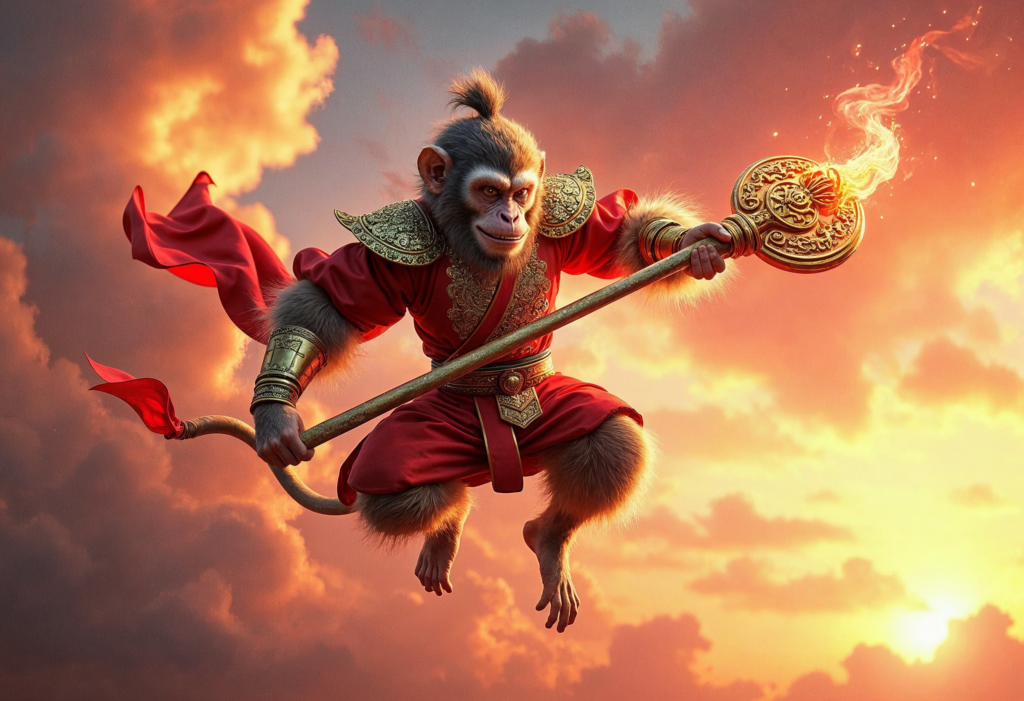|
Getting your Trinity Audio player ready...
|
Two years ago, while working on a task at my workplace, I came across news of DALL-E on 𝕏 (then Twitter) in 2021. It could generate images from text, which simply blew me away.
One of my best friends works at an AI company, and we habitually spend an hour or two every fortnight discussing tech and our vision of the future. During one of these conversations, I learned about Large Language Models (LLMs) and how they train their own models. Incidentally, my friend’s company is working on video generation.
So when Midjourney was launched in March 2022, it definitely piqued my interest. Similar to DALL-E, it looked impressive from a high-level perspective. While the images still needed refining, I was amazed by what I saw.
The Reason for 100 Days, 100 Images Challenge
Within a few months, several iterations and versions of DALL-E and Midjourney were released, along with a plethora of new sites launching their own AI image-generation models.
The trend of ‘Prompt Engineering’ also gained significant traction and remains popular as of this writing.
Having been on X since 2012, it has been my primary source of news, as opposed to traditional media. My network there consists mostly of software developers, tech enthusiasts, and writers.
Naturally, I wanted to try my hand at prompting, and I figured generating images on X consistently would be an ideal way to start. I decided to take on a ‘100 days, 100 images’ challenge, where I would use an AI tool to generate an image daily and post it on X with the hashtag #100DaysOfAI.
But what is Prompt Engineering exactly?
Prompt Engineering, in layman’s terms, is the practice of crafting the right questions or instructions to guide AI models, especially LLMs, to produce desired outcomes.
Think of it as programming, but easier. In traditional programming, you need to know a specific language like Java, JavaScript, or Python to write programs. In prompt engineering, the language you need is English (or any other natural language, depending on the model’s support).
You’re already familiar with such technology in your day-to-day life. Voice assistants like Siri, Google Assistant, or Alexa use natural language processing; you’ve likely used English or your regional language to make them play songs or add items to your grocery cart.
In fact, Andrej Karpathy, former director of AI at Tesla, has even described English as the hottest new programming language.
Prompt engineering has emerged as a crucial skill over the last few months, as it serves as the bridge ensuring proper human-AI interaction.
As the latest LLMs have shown remarkable improvements in understanding context and nuance, your prompts can significantly influence the quality of the response you receive from an AI model.
An Illustration of Prompting for Generating Images
While this topic can be expanded into several facets, I will focus on how prompting works and why it’s consistently intriguing. There are numerous ways to prompt ChatGPT or any LLM model (or AI chatbot), generating a wide range of use cases.
However, in this article, I will concentrate on image generation.
First and foremost, prompts work differently on various tools based on the fine-tuned image model they use. In fact, even within the same AI tool, prompts generate different results each time.
This makes sense, doesn’t it? It’s essential for generating unique images; otherwise, we’d all end up with identical images using the same prompts.
Let me illustrate with some examples with the same prompts:
Illustration #1
So I used the below prompt in Leonardo AI, a popular text-to-image generation tool:
A mesmerizing double exposure art piece in the style of Alex Stoddard on a worn, cracked paper, capturing a scene that is dynamic and captivating, evoking a vintage aesthetic, combines two subjects, revealing layers of complexity and intrigue.
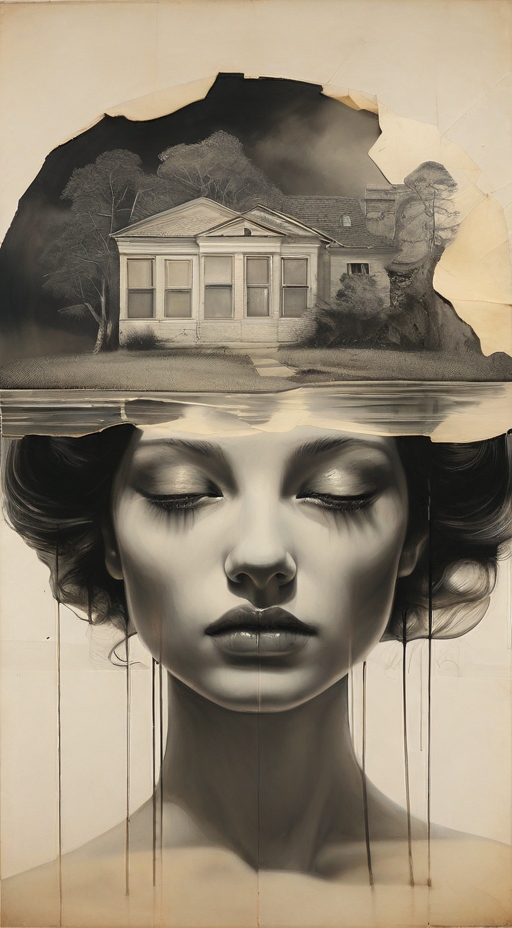
The image generated is beautiful. The lady envisions a house, complete with a backyard and a lake. It’s a double exposure art, so the AI contextualized the image in a particular way.
For those of you who don’t know, double exposure is a popular photographic technique that combines two exposures into a single image. There are different versions and varieties of double exposure photos (which you can google about).
Illustration #2
Unsatisfied with the previous generation, I ran the prompt again and this time, the image was better.
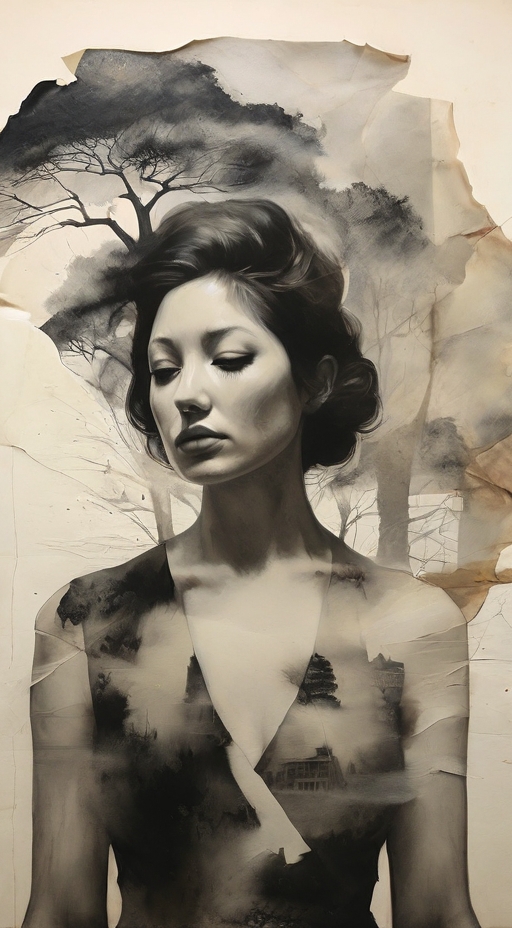
This time the image is the actual double exposure artwork, and it is somewhat comparable to what you see professional photographers take. But this (kind of) image, I have already generated in the past.
Illustration #3
Another try with the same prompt, and the artwork slightly changed.

The image is good, but it looks like a “more tattered” art piece and is not what I was hoping for.
Illustration #4
The image on the final try turned out to be incredible, and it is probably my favourite.
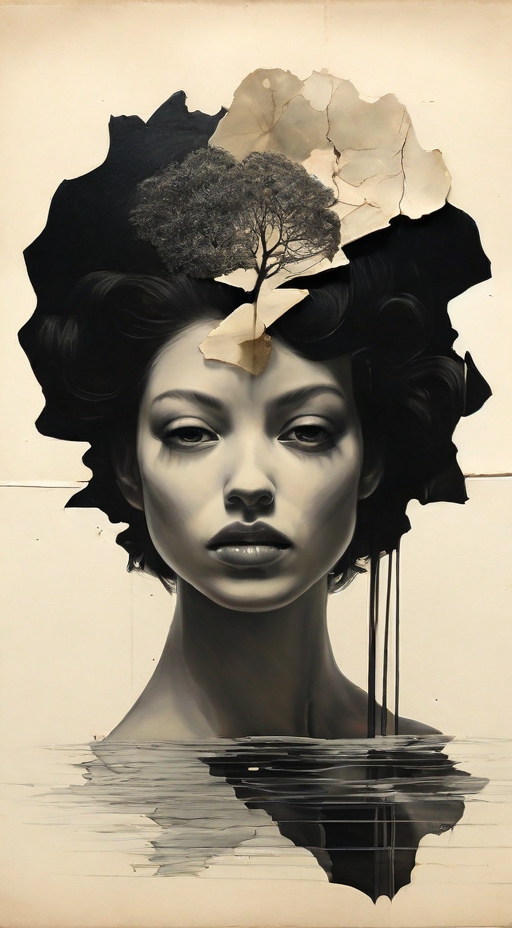
The image adheres to the prompt I used. It is using the elements of double exposure artwork on a cracked paper in the style of Alex Stoddard, a renowned photographer. Although it doesn’t have 100% double exposure elements, it has all the right amounts. This is the kind of image I would print and attach in my home as a poster.
You might not like some other image or no image at all. But this is to show you that prompts work differently every single time. I have used the same prompt on the same AI tool, and you can see the variations. If you slightly alter the prompt, the image generation would be completely different.
Hence, if you are trying to generate images using an AI tool, you have to do multiple iterations with the same or different prompts until you get the desired result.
The #100DaysOfAI Challenge
For this challenge, the rule was simple. You can use any of the prominent artificial intelligence text-to-image tools, where you use your prompt and the tool generates images based on the context of the prompts.
I proceeded to generate 100 images, which proved to be an excellent learning experience. The AI tools I utilized include LeonardoAI, Midjourney, Bing AI Creator, and NightCafe, among others.
I have also experimented with various text-to-video tools such as Runway, Pika, and Luma Labs, but we’ll save that discussion for another day.
I learned so much about different styles of art forms and about artists from all generations from all over the world, photographers, and their photography styles, popular paintings, writers, AI models, prompt writing, etc.
Let me show you some of my favourite image generations along with their prompts.
A Black & White Candid of a Young Girl in a Field of Wildflowers
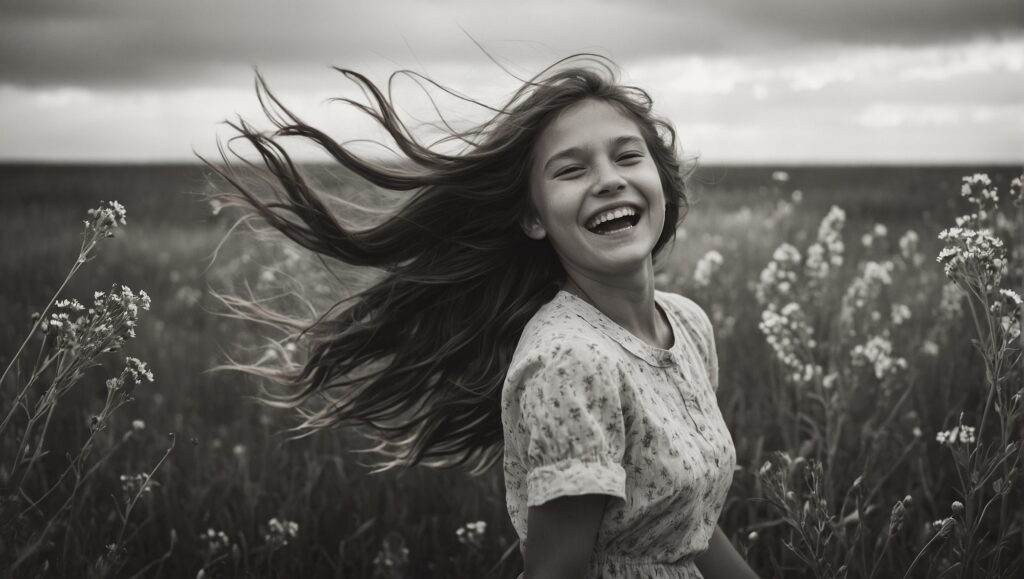
Prompt: A young girl with flowing brown hair races against the wind, in a field of wildflowers, her laughter echoes, captured in a candid photograph, black & white image, raw emotion in her joyful expressions, enhancing the contrast of light & shadows.
A Hyperrealistic Portrait of the Goat-man in the Mist
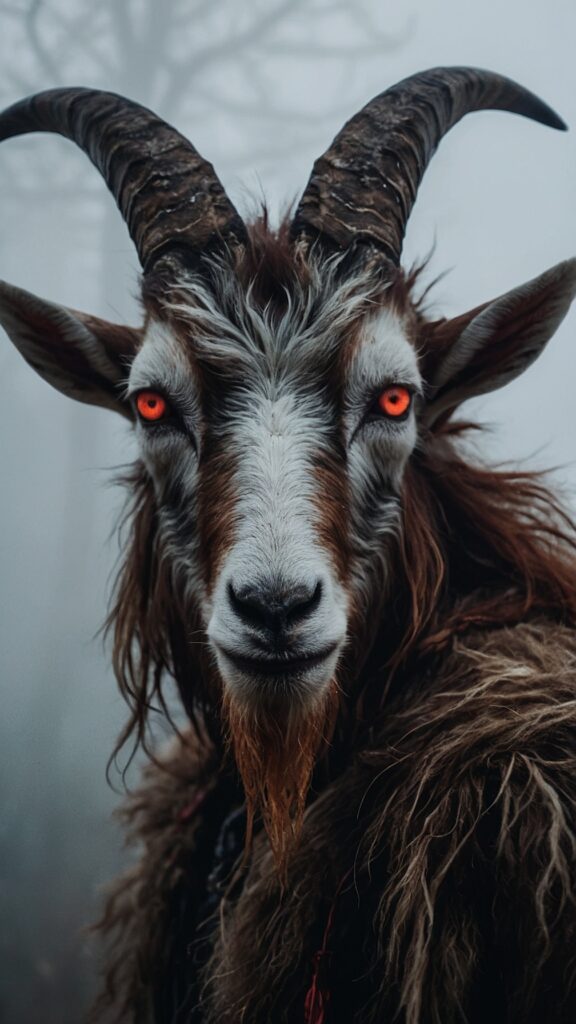
Prompt: A hyperrealistic close-up of a Goatman’s face in the mist, emphasizing his frightening features, the eyes are glowing red, the face is a mix of human and goat, with large pointy horns.
Vincent van Gogh as Harry Potter
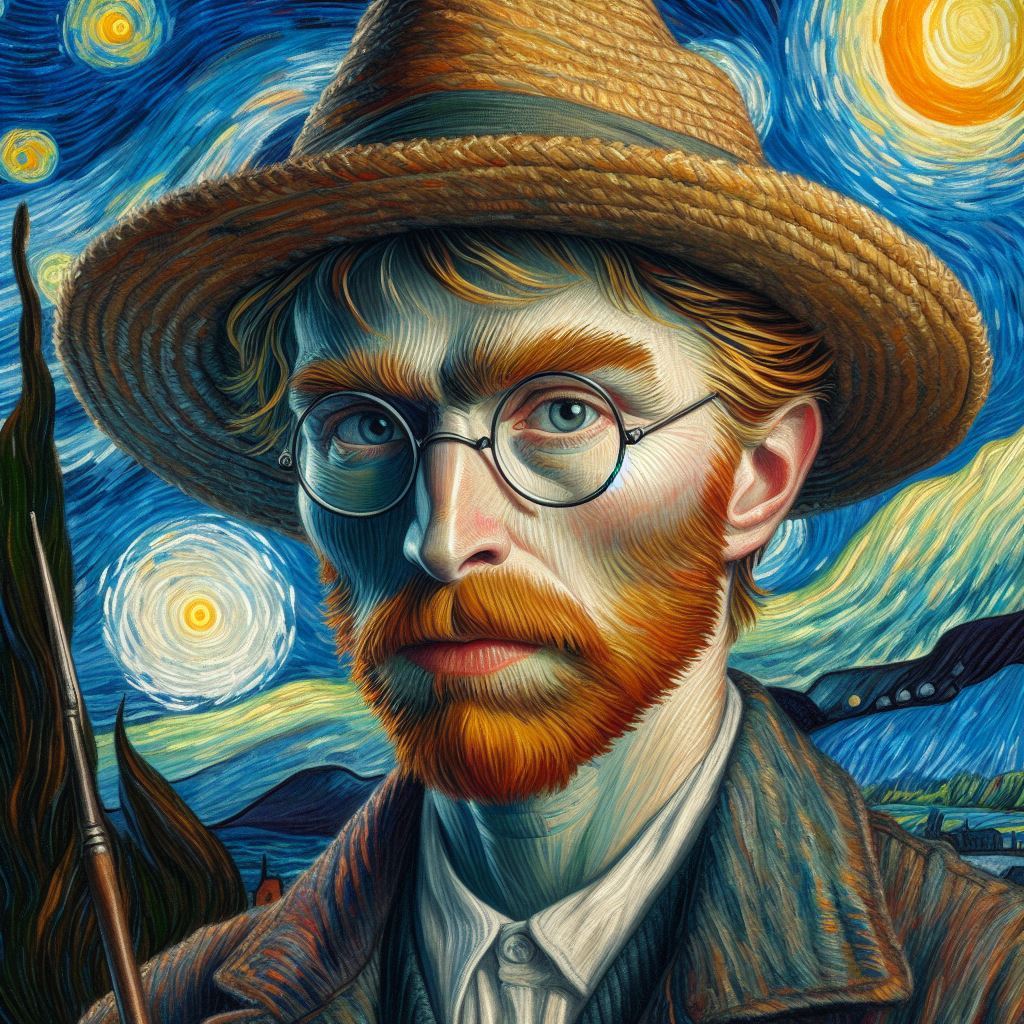
Prompt: “Self-Portrait with a Straw Hat” by Vincent van Gogh, reimagined as the “Harry Potter” movies.
Photorealistic Capture of Light, Shadow, and Human Imperfection

Prompt: Strong light and shadows, insanely realistic unclean skin with slight wrinkles and some freckles, gray streaks in hair, insanely detailed vivid eyes, photorealistic.
Neon Dreams

Prompt: Bright neon colours, cartoon style illustration of a woman experiencing hallucinations, stoned, splash art, splashed neon colours, iridescent glowy smoke, motion effects.
8K Photorealistic Digital Portrait
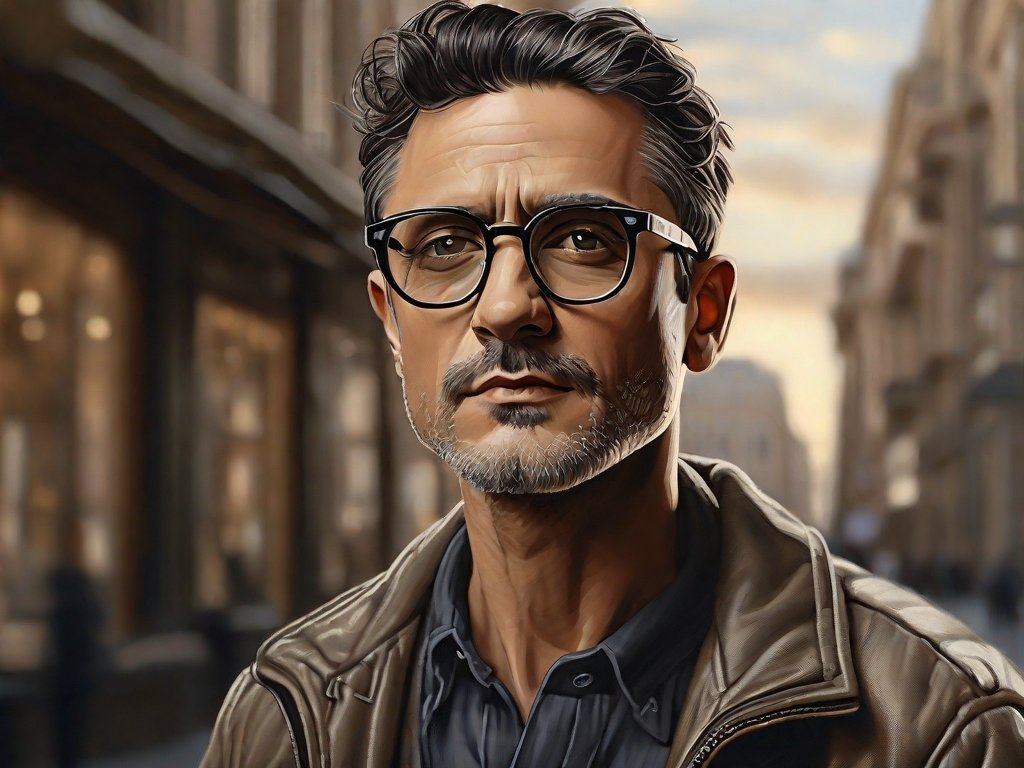
Prompt: A meticulously crafted digital artwork, rendered with remarkable precision and attention to detail, brings to life a man wearing spectacles, resembling a photograph of the highest resolution. From the fine lines etched on his seasoned face to the intricate design of the frames he wears. This photorealistic image, exhibiting an impressive 8k resolution. With its impeccable quality and lifelike depiction, this image seamlessly blurs the line between reality and art.
Sketchbook Portrait of a Nordic Woman Warrior
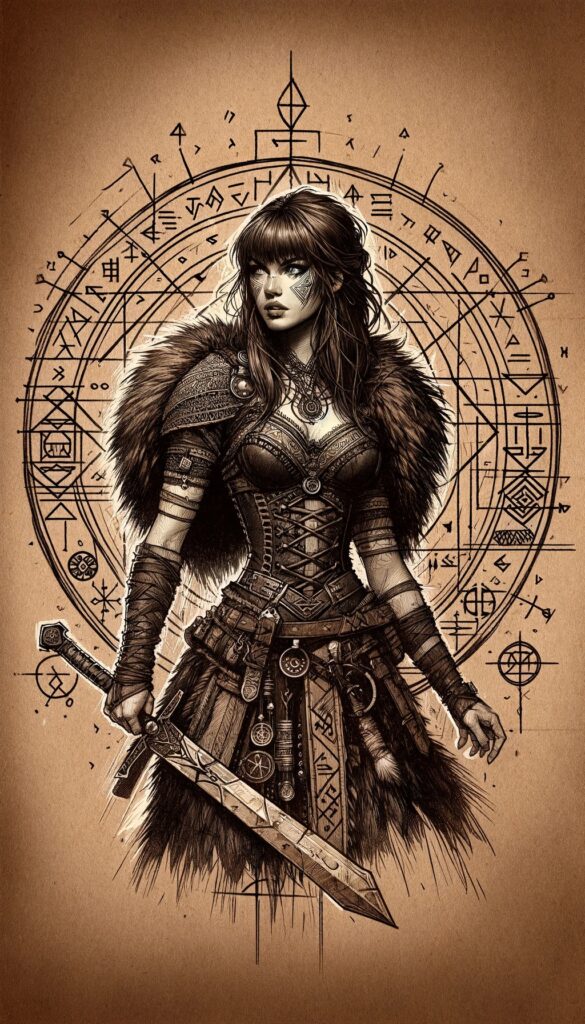
Prompt: Sketchbook style, sketchbook, hand drawn, dark, gritty, realistic sketch, rough sketch, mix of bold dark lines and loose lines, on paper, turnaround character sheet, a stunningly beautiful Nordic Woman Warrior. With a long blade, leather and lace corset, warrior dress, like the pre-historic times, brown floating hair, bangs, full body, Nordic symbols, runes, dark theme, perfect composition golden ratio, masterpiece, 4k, sharp focus.
The Punching Master versus The Rookie

Prompt: 50-year-old Mike Tyson and 25-year-old Jake Paul in a boxing ring while the mass crowd roars with excitement as the men are drenched in sweat in the spotlight fighting for a championship belt, hyperrealistic.
Hyperrealistic Woman Selfie at a Party
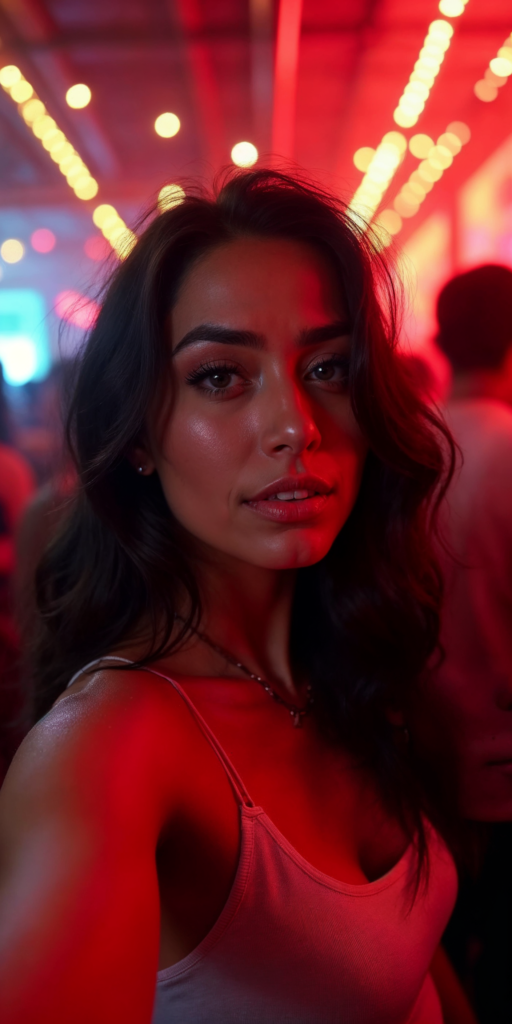
Prompt: Selfie, self-portrait of a woman at the party, candid, ultra-wide-angle, distinct facial features, neon lights, red, everyday outfit, hyperrealistic.
The Lego Mona Lisa
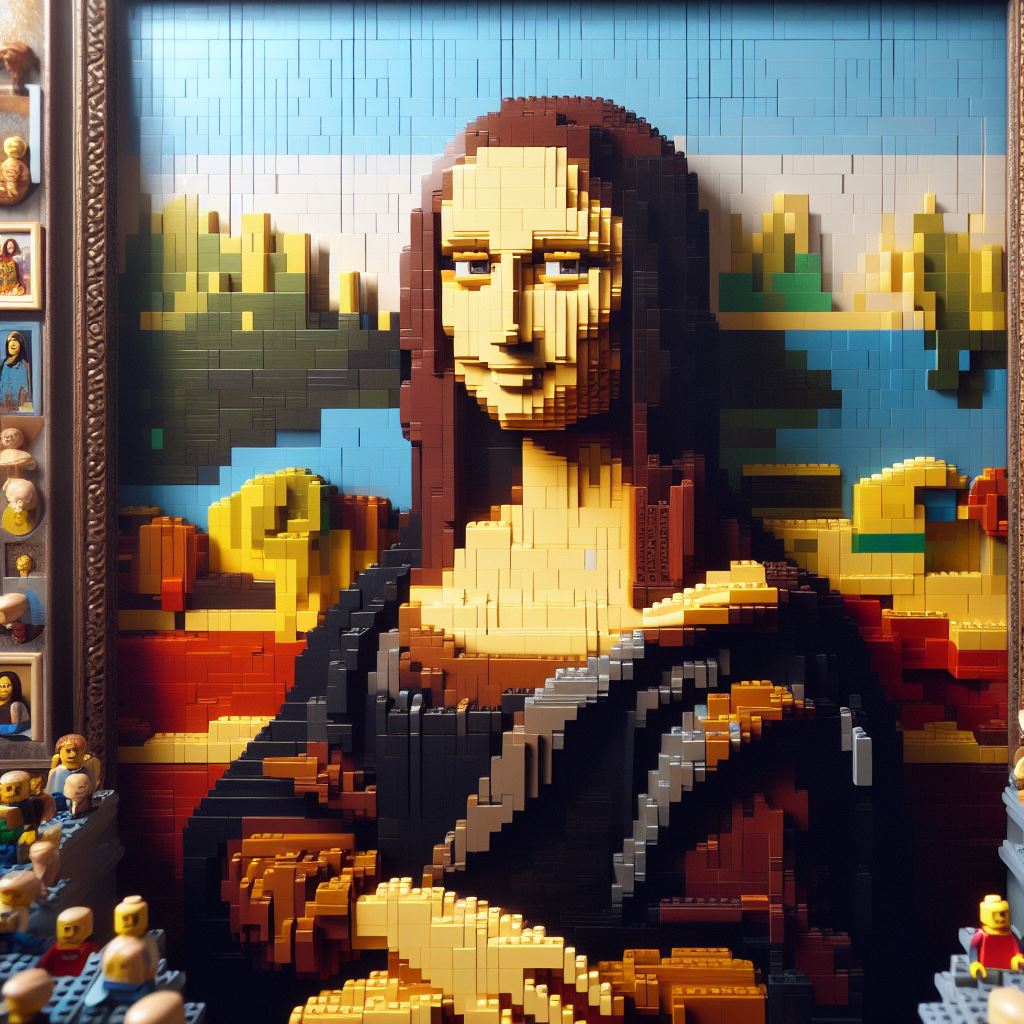
Prompt: Lego blocks artwork of “Mona Lisa” by Leonardo da Vinci
If this article provided you with value, please support me by buying me a coffee — only if you can afford it. You can also connect with me on X. Thank you!
